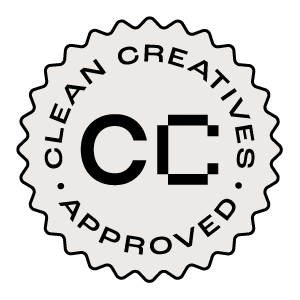New Business pitching is a lot like dating.
Part chemistry, part timing, part optics, part brains.
As we search for our match we can either consciously or unconsciously form checklists of all the ideal qualities our future partner should possess.
In life mine were always pretty simple:
Must be kind
Must love the beach
Must not wear Hawaiian shirts in a serious manner
Must not smoke
They were a solid starting point, but they didn’t always seal the deal. Turns out, when it comes to passions and pastimes, my husband and I couldn’t be more different. It’s our values that have always been in sync.
In the agency business we are conditioned to constantly prove we meet the client criteria, whatever that criteria might be. Take a look at those wish lists from the last RFP you worked on. We have to be ‘nimble’, ‘collaborative’, ‘socially driven’ and ‘innovative’. We will do VR and AR, short form, long form, be data and people driven at the same time. We will do anything to show unequivocally that we are the right agency for them. But how often do we pause to ask ourselves:
Are they the right client for us?
I run an agency that believes in today’s economy doing good and doing well are not mutually exclusive. We are fortunate enough to work with brands and organizations that were born to do good, but just as often brands that were not.
So here are the top 5 questions we ask ourselves to help us find the most successful client partnerships and to hold ourselves responsible to be the agency we claim to be.
1. Does their main product, offering or service cause harm?
This isn’t a simple ‘Yes’ or ‘No’ checkbox question.
For some, Tobacco might be the clearest ‘No’ you can find. But what about alcohol, Fast food and technology platforms that could potentially be irresponsible with the use of your data? Ring any bells?
The truth is, if you are looking for purity, you will go out of business. Some brands may have a product that can genuinely improve people’s lives but perhaps the way they make it is harmful to the environment. What you really need to assess is if any of the potential harm can be changed, and if it can and there is willingness and readiness on behalf of the client to change it, then that’s usually a promising and honest beginning.
2. Is their intention as a business to do well AND to do Good?
We are often approached by companies who want to do some ‘cool social good content’ and our response is always the same – ‘Great, so what are you actually doing?’.
Not every brand is going to be an activist, crusader, or ‘Purpose Poster Child’. And they don’t have to be. But intention is important, so is the brands origin story. It’s not about looking good, it’s about doing good. At Matter we call it actioning your purpose. We have to assess whether there is an authentic desire to take action that will drive business growth and community or societal change. We also want to ensure that the motivation is not fueled by obligation rather, by ambition.
3. Is the Executive Leadership team champions of the ‘Good’ aspiration?
Look at the last 12 months of the CEO’s public announcements and speeches. In this politically divided climate with two thirds of the world’s consumers now buying on beliefs, silence is not an option. So it’s easier than ever before to find bravery in the brand landscape.
There were countless examples last year. Nandita Bakhshi, CEO of Bank of the West made a 1 billion dollar commitment to finance clean, efficient, and renewable energy. Edward W. Stack, CEO of Dicks Sporting Goods announced they would stop selling assault style rifles after the Parkland Shooting.
The vision set from the top has a powerful effect on the entire company’s ability to mobilize. It’s the difference between ideas taking flight or getting lost in the hallways. When executive leadership teams emphasize a values first approach purpose becomes ingrained in the DNA of their companies.
Ben and Jerry’s is a great example of that. When it was sold to Unilever, the brand remained dedicated and active on social justice issues despite the absence of the co-founders. To not exercise those values would have been the equivalent of no longer making ice-cream. It was so deeply linked to who the brand was and why it was beloved.
Listen to the leaders. You will quite quickly gain or lose confidence in how far they can carry what you create with them forward.
4. Are they allocating significant budget to signal real commitment?
Most traditional or larger corporate companies still have ‘CSR’ budget buckets. And usually that bucket is nowhere near as full as the others, forcing the brave CSR leaders to knock on doors and quote Oliver, “Please Sir, Can I have some more?”. There are sometimes truly transformative and innovative ideas brewing within an organization but if they are trapped within a traditional business unit of ‘CSR’ and not seen by the brand team as offering business value they can’t truly flourish.
It’s pretty simple really – put your money where your mouth is.
5. Do they treat the people who work with and for them with dignity and respect?
I sometimes feel like ‘Niceness’ has become a far too underrated quality in business. Following Bill Bernbach’s philosophy, I only want to work with nice people. Yes they should be clever and skilled and visionary too. But I want them to be nice. To not treat my team like a ‘vendor’ but like a partner. To say thank you for the late nights and weekends. To ask about our vacations and families.
Look at how diverse the business’s leadership team is, check out how they engage their employees, see how long people actually stay. If there is a culture of fear your creative contribution will never make a real impact.
Just like in dating, these criteria don’t always guarantee a perfect match, but it’s good to remind yourself and your agency team that you are quite the catch.
If all us agency folk hold ourselves and our future clients to a higher standard during the RFP process, we may discover our untapped industry power to make the private sector live up to its real and infinite potential for good.















